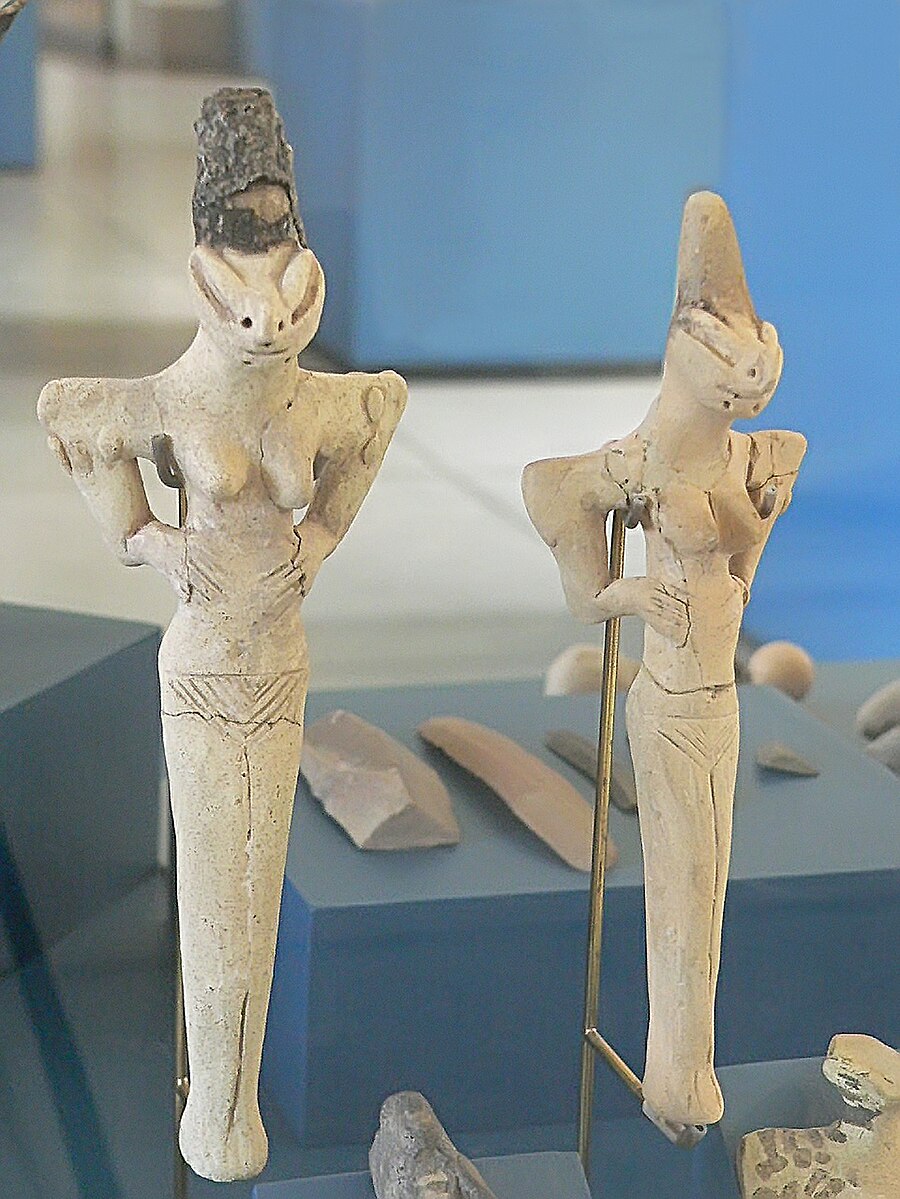Lizard Goddess Depiction of Ubaid, Iraq Discovered in Austria’s Ancient 60.000 years old man made Tunnel System

An astonishing discovery has reignited debates about ancient civilizations and shared global mythologies. A depiction resembling the Ubaid Lizard Goddess, a figure from the prehistoric Ubaid culture of Mesopotamia, was found in a 60,000-year-old underground tunnel system in Austria by archaeologist Dr. Heinrich Kusch.
This groundbreaking find challenges current understandings of human history and raises questions about potential cultural connections between distant societies and eras.
The Ubaid Lizard Goddess
The Ubaid culture, which flourished in Mesopotamia around 6500–3800 BCE, is known for its enigmatic figurines depicting humanoid figures with reptilian features. These “lizard people” figurines often include exaggerated eyes, elongated heads, and scales. Some are interpreted as deities or beings of great significance, possibly linked to fertility or cosmological beliefs.
The Austrian Discovery
Dr. Heinrich Kusch, an expert in ancient tunnels, uncovered the depiction deep within a sprawling subterranean network in Austria. The tunnel system, believed to date back 60,000 years, features sophisticated architecture and carvings that suggest a level of human development far beyond what was previously thought for the period.
Among the carvings was a striking image of a humanoid figure with reptilian traits—elongated limbs, a scaled body, and a lizard-like face. The figure closely resembles the Ubaid Lizard Goddess, sparking intrigue about how such an iconographic similarity could exist between two regions separated by thousands of miles and millennia.
Implications of the Find
The discovery raises profound questions:
- Shared Symbolism Across Cultures: Could early humans, or even pre-human civilizations, have shared common myths, beliefs, or memories that persisted through time and space?
- A Lost Civilization: The advanced nature of the tunnels and carvings suggests the possibility of a sophisticated, yet unknown, culture existing tens of thousands of years before recorded history.
- Extraterrestrial Theories: Some researchers speculate that the Ubaid Lizard Goddess and the Austrian depiction could represent interactions with non-human intelligences, such as extraterrestrial beings, who may have influenced human mythology and religion.
Skepticism and Scientific Rigor
While the find is remarkable, skeptics urge caution. Some experts believe that the resemblance to the Ubaid figurines might be coincidental or the result of pareidolia—seeing patterns or images that aren’t truly there. Others question the dating of the tunnel system and carvings, suggesting more analysis is needed to verify their age and authenticity.
A New Chapter in Human History?
Dr. Kusch’s discovery in Austria could mark a turning point in understanding humanity’s distant past. Whether the lizard-like depiction points to a shared prehistoric belief system, a forgotten advanced civilization, or something even more extraordinary, it serves as a reminder of how much remains undiscovered beneath the surface of our world.
As researchers continue to investigate this enigmatic find, the lizard goddess of Austria may join the ranks of history’s greatest mysteries.
Mystery in Austria: Why Does a 60,000-Year-Old Goddess Depiction Resemble Ubaid Lizard Figurines?
A startling archaeological discovery in Austria has sparked global intrigue: a depiction of a goddess stone figurine in a 60,000-year-old tunnel system closely resembles the enigmatic Ubaid lizard figurines of Mesopotamia. Unearthed by archaeologist Dr. Heinrich Kusch, the find raises profound questions about prehistoric cultures, their interconnectedness, and the origins of shared myths and beliefs.
The Austrian Discovery
The figurine was found deep within an ancient subterranean network in Austria, thought to be among the oldest tunnel systems ever discovered. The depiction portrays a humanoid figure with distinct reptilian traits: a slender body, elongated limbs, and a face featuring a lizard-like snout and large, almond-shaped eyes.
What makes this discovery extraordinary is its uncanny similarity to the Ubaid lizard figurines, crafted by the Ubaid culture in Mesopotamia some 7,000 years ago. These figurines, often associated with fertility and mythology, depict reptilian humanoids and have long puzzled researchers.
Uncanny Resemblance
The similarities between the Austrian goddess and the Ubaid lizard figurines include:
- Reptilian Traits: Both feature scaled textures, elongated bodies, and lizard-like faces.
- Anthropomorphic Features: Both show humanoid characteristics, such as upright posture and stylized limbs, suggesting these figures were more than simple animal depictions.
- Sacred Association: Both are believed to represent deities or supernatural entities connected to fertility, the cosmos, or creation myths.
Possible Explanations
The resemblance raises critical questions about how such similar iconography could exist in cultures separated by tens of thousands of years and vast geographical distances.
1. Shared Archetypes in Human Consciousness
One theory is that early humans, regardless of location, developed similar archetypes in their myths and beliefs. Reptilian figures might symbolize primal fears or powers, like the connection between snakes and fertility in many ancient cultures.
2. A Lost Global Civilization
Some researchers speculate that both the Austrian depiction and the Ubaid figurines could point to a highly advanced, now-lost civilization that influenced cultures across continents. Such a civilization might have spread its religious or mythological motifs before disappearing from history.
3. Extraterrestrial Influence
A more speculative hypothesis suggests that these depictions reflect encounters with non-human intelligences. The reptilian traits could represent extraterrestrial beings worshipped as gods by early humans, influencing art and religion across millennia.
4. Coincidence and Independent Development
Skeptics argue that the resemblance could be coincidental, arising from the universal human tendency to imbue animal traits into religious figures or art. The tunnels’ age and the carving’s details are also under scrutiny, with some experts calling for further analysis.
Implications for Human History
If the carving’s age and authenticity are confirmed, it could rewrite our understanding of prehistoric cultures. The notion that similar artistic and religious motifs existed tens of thousands of years apart challenges current views of early human development and connectivity.
Future Research
Archaeologists and historians are now collaborating to study the carving’s context and compare it to other prehistoric art. Advanced dating techniques and analysis of the tunnel system could shed more light on its creators and their motivations.
While the mystery remains unsolved, the goddess figurine in Austria has opened the door to exciting possibilities about humanity’s shared past—and perhaps even the origins of its most enduring myths.




